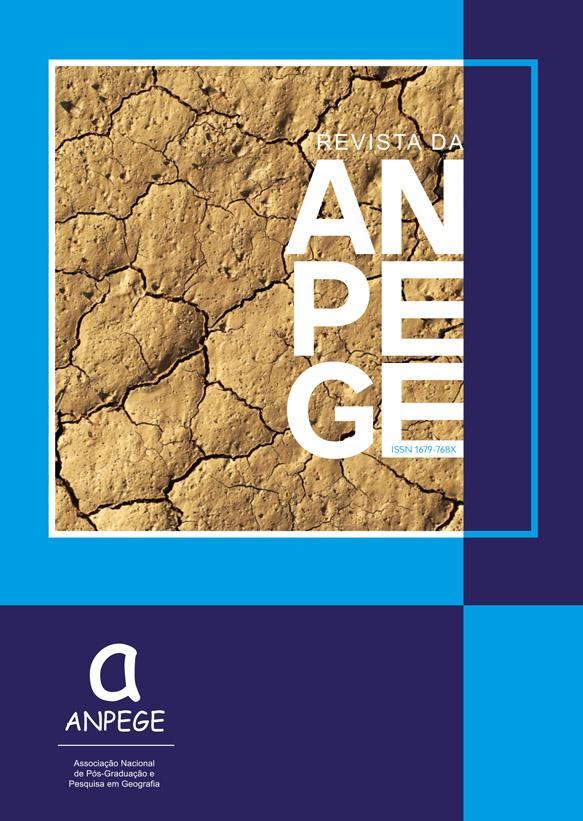Las Rías Baixas más allá de sol y playa. O Grove, estudio del caso. (Galicia, España)
DOI:
https://doi.org/10.5418/ra2021.v17i34.15665Palabras clave:
Rías Baixas, O Grove, desestacionalización, gastronomía, naturalezaResumen
El fuerte crecimiento experimentado por el mediterráneo español alrededor del producto de sol y playa, así como el caso de Canarias o el atlántico andaluz aparentemente dejaba en una posición de desventaja a las costas del norte de España al disponer éstas de una irregularidad climática que no propicia seguridad a quienes buscan muchas horas de sol durante buena parte del año. Por ello durante la segunda mitad del siglo XX el destino turístico de Rías Baixas se arropó con otros atributos turísticos complementarios, como son la gastronomía y el paisaje. Ello no resultó suficiente para superar la marcada estacionalidad en comparación con el resto de destinos estatales. En el apartado metodológico, siguiendo el estudio del caso, nos hemos basado principalmente en encuestas y entrevistas realizadas en la localidad de O Grove. Se tratará de comprobar la conveniencia de cambiar de modelo así como las alternativas al mismo.
Descargas
Citas
Athena, H.N, Lumbers, M. Eves,A (2012). Globalisation and Food consumption in tourism. Annals of Tourism Research. Volume 39, Issue 1. Pp 171-196.
https://doi.org/10.1016/j.annals.2011.05.010 DOI: https://doi.org/10.1016/j.annals.2011.05.010
Batat W. (2019) The role of luxury gastronomy in culinary tourism: An ethnographic study of Michelin-Starred restaurants in France. Int J Tourism Res. 2020; 1–14.
https://doi.org/10.1002/jtr.2372 DOI: https://doi.org/10.1002/jtr.2372
Boniface, P. (2003), Tasting Tourism: Traveling for Food and Drink. Burlington, VT: Ashgate Publishing.
https://doi.org/10.4324/9781315241777 DOI: https://doi.org/10.4324/9781315241777
Comisión Mundial del Medio Ambiente y del Desarrollo y Brundtland, G. H. (1989). Nuestro Futuro Común.
https://es.scribd.com/doc/105305734/ ONU-Informe-Brundtland-Ago-1987-Informe-de-la-Comision-Mundial-sobre- Medio-Ambiente-y-Desarrollo.
Crouch, G. I., Ritchie, J. R. (1999), “Tourism, competitiveness, and societal prosperity”, Journal of Business Research, 44, 137-152.
https://doi.org/10.1016/S0148-2963(97)00196-3 DOI: https://doi.org/10.1016/S0148-2963(97)00196-3
Du Rand, G.; Heath, E. y Alberts, N. (2003), “The Role of Local and Regional Food in Destination Marketing”, Journal of Travel & Tourism Marketing, 14 (3-4), 97-112.
DOI:10.1300/J073v14n03_06 DOI: https://doi.org/10.1300/J073v14n03_06
Dencker, A. de F. M. (1998) “Métodos e técnicas de pesquisa em turismo”. Futura, São Paulo.
Dinamiza Asesores 2017. II Estudio de la Demanda Turística. https://dinamizaasesores.es/turismo/turismo-gastronomico/ii-estudio-la-demanda-turismo-gastronomico-espana/
Directrices Generales de la Estrategia de Turismo Sostenible de España 2030, (enero de 2019). Secretaría de Estado de Turismo. Ministerio de Industria, Comercio y Turismo.
Donaire, J.A. (2002): «Ecoturisme en zones de muntanya». IV Congrés International del Medi Ambient d’Andorra. Andorra, Centre de Biodiversitat. Institut d’Estudis Andorrans, p. 8.
Estrategia 2020 de turismo de Galicia. (Xunta de Galicia).
Exceltur. (2015) Impactos derivados del exponencial crecimiento de los alojamientos turísticos en viviendas de alquiler en España, impulsado por los modelos y plataformas de comercialización P2P.
Gil de Arriba, C. (2019). “Del turismo inmobiliario al turismo de naturaleza ¿cambio de modelo o cambio de discurso? el caso de Noja, un municipio en la costa cantábrica”. Cuadernos de Turismo. nº 43, pp. 301-324. Universidad de Murcia. ISSN: 1139-7861. eISSN: 1989-4635.
DOI: http://dx.doi.org/10.6018/turismo.43.12 Universidad de Cantabria DOI: https://doi.org/10.6018/turismo.43.12
Kivela, J. y Crotts, J. (2006): «Tourism and gastronomy: gastronomy´s influence on how tourists experience a destination». Journal of Hospitality & Tourism Research, nº 3, 354-377.
https://doi.org/10.1177/1096348006286797 DOI: https://doi.org/10.1177/1096348006286797
Instituto de Estudos do Territorio. Xunta de Galicia. https://cmatv.xunta.gal/organizacion/c/CMAOT_Instituto_Estudos_Territorio
López-Guzmán T; Margarida Jesus, M. Turismo, Cultura y Gastronomía. Una aproximación a las rutas culinarias Tourism & Management Studies, vol. 1, 2011, pp. 929-922 Universidade do Algarve Faro, Portugal.
https://www.redalyc.org/pdf/3887/388743867083.pdf
Luque, A.M. (2003): “La evaluación del medio para la práctica de actividades turístico-deportivas en la naturaleza”. Cuadernos de Turismo, nº 12, pp. 131-149.
https://revistas.um.es/turismo/article/view/19111
Muñoz, J.C. (2008): “El turismo en los espacios protegidos españoles, algo más que una moda reciente”. Boletín de la Asociación de Geógrafos Españoles, nº 46, pp. 291-304.
Organización Mundial del Turismo (UNWTO). Código Ético Mundial para el Turismo. Por un Turismo responsable. Naciones Unidas, 2001. Disponible en: http://cf.cdn.unwto.org/sites/all/files/ docpdf/gcetbrochureglobalcodees.pdf
Plan del turismo español Horizonte 2020. (2007). Tourspain. Ministerio de Industria, Turismo y Comercio. Gobierno de España.
Plan Sectorial de Turismo de Naturaleza y Biodiversidad 2014-2020. Ministerio para la transición ecológica y el reto demográfico. Gobierno de España. https://www.miteco.gob.es/es/biodiversidad/temas/conservacion-de-la-biodiversidad/conservacion-de-la-biodiversidad-en-espana/cb_esp_plan_sect_turismo_nza_y_biodiversidad.aspx
Real Decreto 416/2014, de 6 de junio, por el que se aprueba el Plan sectorial de turismo de naturaleza y biodiversidad 2014-2020. Boletín Oficial del Estado núm. 147, de 18 de junio de 2014, pp. 46026-46048.
https://www.boe.es/diario_boe/txt. php?id=BOE-A-2014-6432
Descargas
Publicado
Cómo citar
Número
Sección
Licencia
Autores que publicam nesta revista concordam com os seguintes termos:Autores mantêm os direitos autorais e concedem à revista o direito de primeira publicação, com o trabalho simultaneamente licenciado sob a Creative Commons Atribuição-NãoComercial-CompartilhaIgual 3.0 Brasil que permitindo o compartilhamento do trabalho com reconhecimento da autoria do trabalho e publicação inicial nesta revista.
Autores têm autorização para assumir contratos adicionais separadamente, para distribuição não exclusiva da versão do trabalho publicada nesta revista (ex.: publicar em repositório institucional ou como capítulo de livro), com reconhecimento de autoria e publicação inicial nesta revista.
Autores têm permissão e são estimulados a publicar e distribuir seu trabalho online (ex.: em repositórios institucionais ou na sua página pessoal) a qualquer ponto antes ou durante o processo editorial, já que isso pode gerar alterações produtivas, bem como aumentar o impacto e a citação do trabalho publicado (Veja O Efeito do Acesso Livre em http://opcit.eprints.org/oacitation-biblio.html.)
Authors who publish with this journal agree to the following terms:
Authors retain copyrights and grant the Journal the right of first publication with the work simultaneously licensed under a Creative Commons Atribuição-NãoComercial-CompartilhaIgual 3.0 Brasil that allows others to share the work with an acknowledgement of the work's authorship and initial publication in this Journal.
Authors are permitted to enter into separate, additional contractual arrangements for the non-exclusive distribution of the Journal's published version of the work (e.g., post it to an institutional repository or in a book chapter), with an acknowledgement of authorship and initial publication in this journal.
Authors are permitted and encouraged to publish and share their work online (e.g., in institutional repositories or on their website) prior to and during the submission process, as it can lead to productive exchanges, as well as increase the impact and citation of published work (See The Effect of Open Access - http://opcit.eprints.org/oacitation-biblio.html.)




